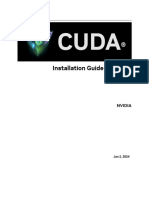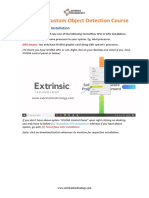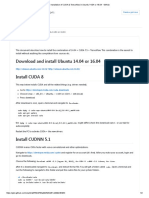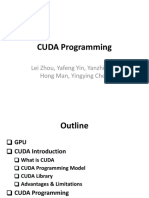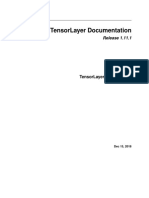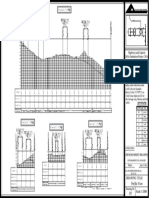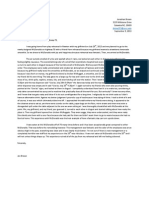0% found this document useful (0 votes)
33 views21 pagesSETUP CUDA + CuDNN + PyTorch + Tensorflow (Windows)
This tutorial provides a step-by-step guide on setting up CUDA, CuDNN, PyTorch, and TensorFlow on Windows, highlighting compatibility issues and installation procedures. Key steps include installing the NVIDIA Video Driver, Visual Studio C++, Anaconda, CUDA Toolkit, and CuDNN, along with verifying installations. The document also includes references for further assistance and troubleshooting common problems encountered during the setup process.
Uploaded by
alexjohCopyright
© © All Rights Reserved
We take content rights seriously. If you suspect this is your content, claim it here.
Available Formats
Download as PDF, TXT or read online on Scribd
0% found this document useful (0 votes)
33 views21 pagesSETUP CUDA + CuDNN + PyTorch + Tensorflow (Windows)
This tutorial provides a step-by-step guide on setting up CUDA, CuDNN, PyTorch, and TensorFlow on Windows, highlighting compatibility issues and installation procedures. Key steps include installing the NVIDIA Video Driver, Visual Studio C++, Anaconda, CUDA Toolkit, and CuDNN, along with verifying installations. The document also includes references for further assistance and troubleshooting common problems encountered during the setup process.
Uploaded by
alexjohCopyright
© © All Rights Reserved
We take content rights seriously. If you suspect this is your content, claim it here.
Available Formats
Download as PDF, TXT or read online on Scribd
/ 21

